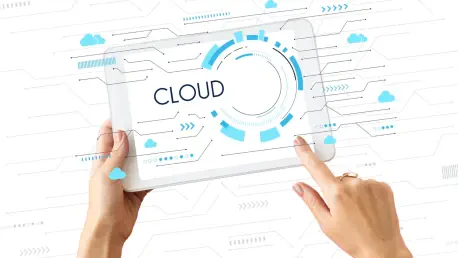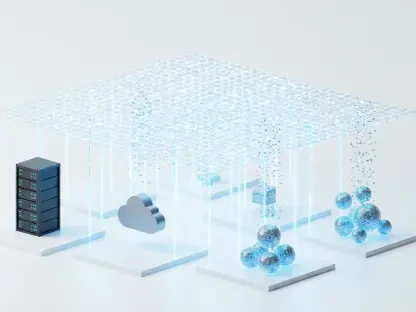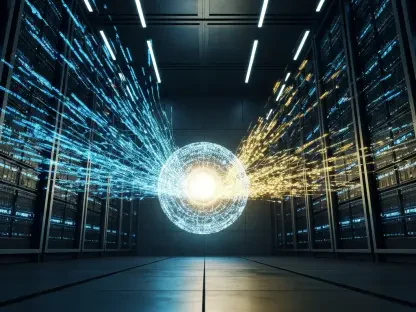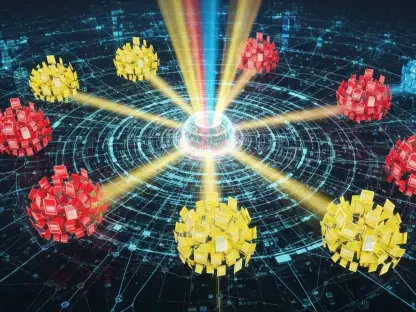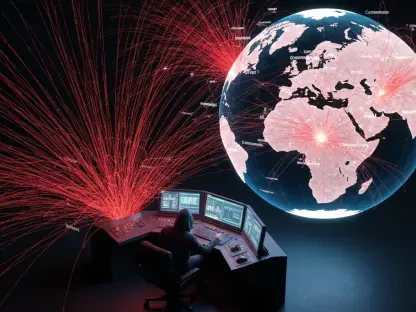The Gartner IT Infrastructure, Operations & Cloud Strategies Conference unfolded in Sydney as a pivotal convergence point for those seeking insights into the evolving IT infrastructure and operations landscape. This annual gathering of thought leaders and tech experts delved deeply into the relationship between sustainability initiatives and AI advancements. These discussions herald novel impacts for critical areas such as data centers, cybersecurity, and generative AI applications. Attendees left with a nuanced understanding of how these advancements could fundamentally reshape IT frameworks worldwide, laying the groundwork for more resilient, sustainable, and technologically advanced systems.
The Future of Data Centers
Technological Integration and Ecological Responsibility
At the forefront of the conference was Tony Harvey, Gartner’s VP Analyst, who detailed the imminent transformation of data centers into integrated and responsibly managed entities. He elaborated on how combining cloud computing, artificial intelligence, edge computing, and automation is essential for creating a robust infrastructure. These combined technologies provide data centers with the necessary scalability and flexibility to respond to growing demands. This technological infusion is not merely about improving efficiency; it’s a paradigm shift aimed at ensuring continuous operation while adapting to environmental challenges and rapidly changing market dynamics.
As organizations grapple with exponential data growth, the focus on ecological responsibility becomes non-negotiable. Data centers, known for their significant energy consumption, must now rise to the occasion, embedding sustainable practices at their core. Harvey emphasized the need for collective industry action and strategic rethinking to curb ecological impacts. The shift involves integrating renewable energy sources and implementing advanced cooling technologies, thereby reducing carbon footprints. The challenge also lies in balancing the ever-increasing need for data processing capabilities with environmental preservation, demanding innovative solutions that support both seamless operations and achievable sustainability goals.
Sustainability and Green Innovations
A distinct buzz around green innovation permeated the session, highlighting the proactive steps data centers are undertaking to minimize their ecological footprint. The drive includes the adoption of liquid cooling technologies, a move that stands out for its ability to lower energy usage while managing high energy density requirements demanded by AI workloads. These eco-friendly solutions underscore the sector’s commitment to pursuing energy-efficient operations without compromising performance. Such green technologies not only aim to mitigate environmental impacts but also to enhance structural resilience, proving vital for future-proofing these critical infrastructures.
The green transformation narrative extends beyond just energy efficiency. Data centers are exploring avenues such as waste heat recovery and sustainable design practices. These groundbreaking approaches not only reduce operating costs but also highlight the potential for broader industry applications. The session underscored that fostering a sustainable data center ecosystem requires more than isolated efforts. It demands a collective, coordinated approach across the industry. As technological advancements continue to accelerate, the imperative to align operational strategies with sustainable practices remains more crucial than ever, marking a definitive step toward a greener future.
Enhancing Cybersecurity for Data and Storage
Evolving Threat Landscape
Julia Palmer, another VP Analyst at Gartner, directed attention to the evolving and increasingly sophisticated threat landscape targeting data storage and backup systems. Traditional security measures, which have long focused on network and endpoint security, are proving inadequate in dealing with modern cyber threats. Palmer highlighted key insights into how these systems are vulnerable to data breaches, data manipulation, and exfiltration attacks. This reality necessitates an evolutionary strategy that goes beyond conventional defensive postures, requiring organizations to rethink how they protect valuable data assets.
The evolving threat landscape calls for a dynamic and comprehensive approach to security, wherein innovation must match the pace of malevolent ingenuity. Such an approach requires an understanding of potential vulnerabilities and the development of proactive strategies that anticipate rather than merely react to threats. Palmer’s discourse sheds light on how crucial it is to integrate sophisticated threat intelligence measures, which can inform organizations of potential risks in real-time, enabling them to take preemptive action. Adapting to this evolving landscape is not optional but imperative for safeguarding the integrity and confidentiality of data in a digital age.
Adoption of Cyberstorage Strategies
In response to rising cyber threats, cyberstorage strategies are being heralded as essential in fortifying data defenses. Palmer advocates for establishing a comprehensive security model that integrates cyberstorage with existing security frameworks like SIEM, XDR, and SOAR tools. These systems function as a cohesive unit, providing layered defense strategies to safeguard against potential breaches. They offer a proactive stance on cybersecurity, focusing not only on prevention but also on timely response and efficient recovery in case of attacks. This holistic approach helps minimize risks while ensuring resilience against evolving threats.
Backups, traditionally seen as the primary defense line, have taken a back seat as contingency measures. The new outlook prioritizes active defense mechanisms, where cyberstorage solutions continuously monitor and protect data infrastructure. This strategic pivot highlights the necessity for multilayered security, ensuring the constant and vigilant protection of data assets. By adopting cyberstorage strategies, organizations are better positioned to deal with potential vulnerabilities, foster enhanced resilience, and maintain trust in their digital infrastructure. Such comprehensive security measures are vital in today’s high-stakes digital environment, safeguarding both operational integrity and stakeholder confidence.
Generative AI Use Cases in Infrastructure and Operations
Augmenting Performance Metrics with GenAI
Generative AI, a compelling theme discussed by Cameron Haight, is redefining how Infrastructure and Operations (I&O) measurements are approached. Haight outlined five fundamental domains where Generative AI can substantially impact code generation, document generation, virtual support agents, ticket support, and content summarization. These applications streamline processes, significantly enhancing operational efficiency and reducing the complexities that often hamper organizational productivity. The integration of AI-driven solutions aligns with a broader trend of leveraging automation to optimize performance metrics, presenting a promising avenue for achieving excellence in operational outputs.
The transformative potential of GenAI in I&O extends beyond mere process acceleration; it involves enhancing the quality and value of operational outputs. By deploying AI for code and document generation, organizations can achieve higher consistency and precision levels, reducing human errors and increasing efficiency. Similarly, virtual support agents fueled by GenAI significantly enhance customer service, offering real-time assistance and facilitating faster issue resolution. These AI-driven capabilities redefine performance metrics by providing deeper insights and more informed decision-making frameworks, which are crucial for competitiveness in today’s fast-paced digital ecosystem.
Collaborative Exploration and External Innovations
Haight further emphasized the importance of collaborative exploration in harnessing GenAI’s full potential. Organizations are urged to conduct thorough internal assessments, determining precisely where AI integrations will yield the greatest benefit. Collaboration with vendors is essential, as external innovations often provide the tools and methodologies needed to implement GenAI solutions successfully. This partnership approach ensures that GenAI applications are tailored to meet specific organizational needs, fostering seamless integration and maximizing value realization from AI investments.
The fusion of GenAI with existing AI frameworks also marks a significant stride toward seamless human-machine interactions. By enhancing natural language processing and understanding capabilities, organizations can bridge the communication gap between AI systems and human users. This capability not only improves user experience but also facilitates the adoption of AI-driven solutions by reducing operational friction. The future trajectory of GenAI in I&O seems promising, with ongoing partnerships and explorations expected to drive continued advancements. By proactively leveraging GenAI, organizations are positioning themselves at the forefront of technological innovation, ready to tackle future challenges with agile and intelligent systems.
Synchronized Progress and Strategic Insights
Sustainability Alignment with Scalable IT Solutions
Throughout the conference, a prevailing consensus among stakeholders centered on the need for IT solutions that are not only scalable but also aligned with sustainability goals. The dialogue emphasized that the IT sector cannot evolve in isolation from environmental considerations. Instead, scalable and secure infrastructure must complement eco-friendly practices, ensuring that technology-driven growth does not lead to ecological degradation. The next-generation IT solutions discussed at the conference highlighted how sustainability and technological prowess could coexist, creating resilient, adaptable infrastructures prepared for future demands.
By aligning IT strategies with sustainability objectives, organizations are not just addressing compliance requirements but are also demonstrating forward-thinking leadership. Sustainable practices in IT can lead to improved brand reputation, stakeholder trust, and financial performance, as efficiency gains often translate into cost savings. The conference discussions underscored that achieving such alignment requires a multifaceted approach, incorporating renewable energy sources, efficient resource management, and continual innovation. This alignment becomes even more critical as global awareness of environmental issues grows, necessitating that IT leaders adopt strategies that are both technologically progressive and ecologically responsible.
Preemptive Adaptation and Technological Investment
The Gartner IT Infrastructure, Operations & Cloud Strategies Conference took place in Sydney, serving as a key gathering for those looking to understand the shifting landscape of IT infrastructure and operations. This annual event brought together thought leaders and technology experts who explored the intricate relationship between sustainability efforts and AI progress. Participants engaged in deep discussions that highlighted emerging impacts on critical areas like data centers, cybersecurity, and generative AI applications. These dialogues provided attendees with insights into how advancements in these areas might redefine IT frameworks on a global scale, steering toward more resilient, sustainable, and technologically sophisticated systems. As the conference unfolded, it emerged as a crucial platform for envisioning the future of IT operations, signifying a paradigm shift toward integrating sustainability and AI into core infrastructure practices worldwide.
